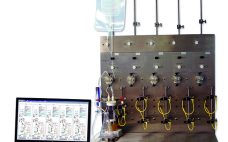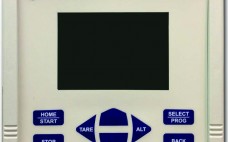Networking of manufacturing process control systems can lead to benefits of efficiency, increased productivity, and better facility use, leading to lower cost of goods (CoG). Furthermore, integration of manufacturing systems with manufacturing execution systems (MESs) upward to an enterprise resource planning (ERP) business system improves overall organizational efficiency. An ERP system enables optimization of intrafacility manufacturing resources. For multiple manufacturing facilities, it facilitates optimization across a company’s manufacturing network. Enabling Technologies and Systems At the enterprise resource planning level (Figure…
Author Archives: Jim Furey
A UF–DF Screening System for Bioprocess Development: Efficient and Cost-Effective Process Fit and Scale-Up to Manufacturing
Ultrafiltration and diafiltration (UF–DF) of therapeutic proteins are performed in either tangential or crossflow mode using membrane filters. UF–DF plays a critical role in both downstream and upstream processes for the biopharmaceutical industry (1). In upstream production processes, classical tangential-flow filtration (TFF) or alternating tangential-flow (ATF) systems are used in high–cell-density perfusion for protein expression by cell culture (2). TFF is used in downstream processing for UF–DF and concentration of therapeutic proteins. TFF unit operations are common in protein purification…
Qualification and Application for Single-Use In-Line Sensors in Bioprocessing
Jim Furey (general manager, PendoTECH) BPI Theater @ INTERPHEX, April 26, 2016 11:30 am–12:00 pm Located in Princeton, NJ, PendoTECH was founded in 2005. The company develops equipment for single-use systems and promotes the concept of automation. It produces sensors, monitors, transmitters, and standard process control systems with the ability to collect and store data, as well as customized solutions. PendoTECH staff have many decades of experience in product development, project management, embedded software development, graphical-interface programs, and mechanical engineering.…
Single-Use Technologies: BIO Theater @ Interphex 2015
Andrew Lidums (NA business development manager, Parker domnick hunter) 2:30–2:55 pm Implementing a Risk-Management–Based Approach to the Prevention of Mycoplasma Contaminations Lidums began with a recent report from Genentech, where a 150-µm long Leptospira organism from a drainage ditch outside the facility managed to penetrate 0.1-µm filters. The company solved this problem by lowering the temperature of the filtration operation, which made the bacteria more rigid and kept them from getting through. Clearly, however, contaminations happen even at large facilities.…
Qualification and Control System Integration of Single Use In-line Sensors (Video)
Measuring Pressure at Very Low Levels with High Accuracy in Single-Use Systems: Improved Performance and Single-Use System Testing
Measuring pressure in single-use systems (SUS) has become an integral part of both upstream and downstream bioprocess operations. Articles have been published on filtration applications (1), and integration into other SUS has been widely adopted. Additionally, information is available on low-pressure applications such as how to prevent overpressurization in single-use bioreactors (2). However, as users and applications both become more sophisticated, improved performance is sought for low-pressure applications (<1 psi) such as in single-use bioreactors. The reasons are two-fold: First,…
Streamlining Downstream Process Development
Normal-flow filtration is used throughout downstream processes for biologics including depth, sterile, and viral filtration applications. Because of its ubiquity in large-scale biomanufacturing, using the most efficient normal-flow filter media area and type can lead to significant cost savings. To determine the most effective media type and area, developers use a scaled-down process model is used in bioprocess laboratories to minimize material requirements. Constant–flow-rate filter evaluations involve direct scale-down parameters that match manufacturing-scale process conditions. This type of evaluation can…
Adoption of Single-Use Sensors for BioProcess Operations
The increasing adoption of single-use technology in biopharmaceutical, vaccine, and cell therapy production is one indication that such technology has moved far beyond its novelty stage. Arguably, this is the preferred technology of newly developed processes. Benefits have been well documented in journals and conference presentations and have led the industry to form the Bio-Process Systems Alliance (BPSA). One current need is for process sensors that offer the same convenience as disposable bags, tubings, and filters being used. An ideal…





